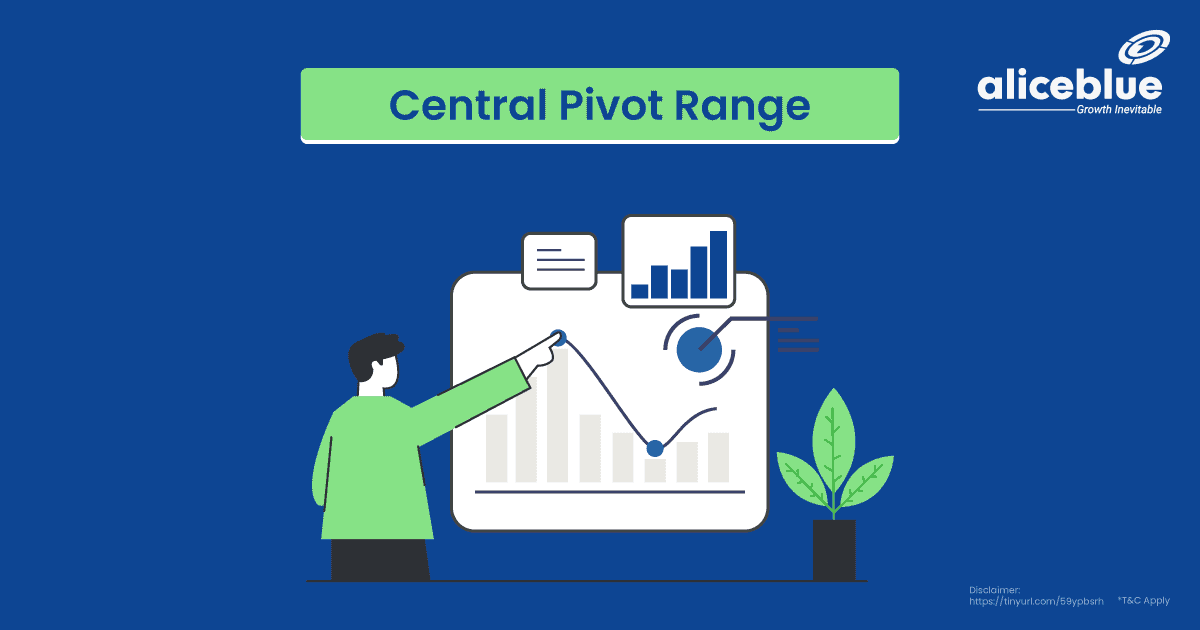The Central Pivot Range (CPR) is a technical tool predicting potential support and resistance levels. It’s calculated from the previous day’s high, low, and close prices, offering a central pivot point with two accompanying levels, guiding traders in making informed entry and exit decisions.
Content Id:
- What Is Central Pivot Range?
- How To Calculate CPR ? – CPR Calculation Formula
- Advantages of CPR
- What Is Central Pivot Range? – Quick Summary
- Central Pivot Range – FAQs
What Is Central Pivot Range?
Central Pivot Range (CPR) is a technical analysis tool that calculates key support and resistance levels for a trading day. It’s derived from the prior day’s high, low, and close, providing a central pivot and two critical surrounding levels for market guidance.
The Central Pivot Range (CPR) is primarily used in day trading to predict key price levels. It includes a central pivot point, calculated from the previous day’s high, low, and closing prices, and serves as a primary gauge for potential price movement.
Surrounding the central pivot are two additional levels: the top and bottom pivot ranges. These act as potential support and resistance zones. Traders use these three points to strategize entries, exits, and set stop-loss orders, interpreting them as key signals for market sentiment.
For example: Consider a stock with a previous day’s high of ₹150, low of ₹130, and close of ₹140. The CPR calculates a central pivot at ₹140, with support around ₹130 and resistance near ₹150, guiding traders on potential entry and exit points.

How To Calculate CPR ? – CPR Calculation Formula
To calculate the Central Pivot Range (CPR) in rupees, first find the pivot point: add the previous day’s high (e.g., ₹150), low (e.g., ₹130), and close (e.g., ₹140), then divide by three. This average is the central pivot. The top and bottom levels are calculated using different formulas involving these same values, providing support and resistance ranges.
Pivot Point (P): P = (High+Low+Close) / 3
Top Central Pivot (TC): TC = (Pivot Point+High) / 2
Bottom Central Pivot (BC): BC = (Pivot Point+Low) / 2
Advantages of CPR
The main advantages of the Central Pivot Range (CPR) are its ability to provide clear support and resistance levels, guide entry and exit decisions, offer insight into market sentiment, and help in risk management by identifying potential reversal points in the market.
- Clear Support/Resistance Levels: CPR identifies crucial price levels that can act as support or resistance.
- Guided Trading Decisions: Helps traders make informed entry and exit decisions based on these levels.
- Market Sentiment Insight: Offers a glimpse into the market’s bullish or bearish tendencies.
- Risk Management: Assists in setting stop-loss and take-profit orders effectively.
- Reversal Point Identification: Useful in spotting potential market turning points.
- Simplicity and Accessibility: Easy to calculate and widely accessible for traders.
- Versatility: Applicable in various markets and time frames, enhancing its utility for different trading styles.

To understand the topic and get more information, please read the related stock market articles below.
What Is Central Pivot Range? – Quick Summary
- The Central Pivot Range (CPR) is a trading indicator that determines important daily support and resistance points. It uses the previous day’s high, low, and closing prices to establish a midpoint and two vital adjacent levels, aiding market direction assessment.
- For the Central Pivot Range (CPR) in rupees, sum the prior day’s high (₹150), low (₹130), and close (₹140) and divide by three to get the pivot. The top and bottom levels, based on these figures, offer crucial support and resistance zones.
- The main advantages of CPR include offering precise support and resistance points, aiding in making entry and exit choices, providing market sentiment insights, and assisting in risk management through the identification of possible market reversal areas.
- Open free demat account with Alice Blue in 15 minutes today! Invest in Stocks, Mutual Funds, Bonds & IPOs for Free. Also, trade at just ₹ 15/order and save 33.33% brokerage on every order.
Central Pivot Range – FAQs
What Is CPR In Trading?
CPR in trading stands for Central Pivot Range, a technical analysis tool that calculates key support and resistance levels using the previous day’s high, low, and close prices to guide trading decisions.
What Is The Formula For CPR?
The formula for CPR (Central Pivot Range) is:
Pivot Point (P): P = (High+Low+Close) / 3
Top Central Pivot (TC): TC = (Pivot Point+High) / 2
Bottom Central Pivot (BC): BC = (Pivot Point+Low) / 2
What are the types of central pivot ranges?
The types of Central Pivot Ranges (CPR) include the Standard CPR, which uses the basic formula, and variations like Fibonacci CPR, Woodie’s CPR, and Camarilla CPR, each applying different methods to calculate pivot points and support/resistance levels.
What is the importance of the central pivot range?
The importance of the Central Pivot Range lies in its ability to provide traders with critical support and resistance levels, guiding their entry and exit strategies, and offering insights into potential market movements and reversals.
We hope that you are clear about the topic. But there is more to learn and explore when it comes to the stock market, commodity and hence we bring you the important topics and areas that you should know:






